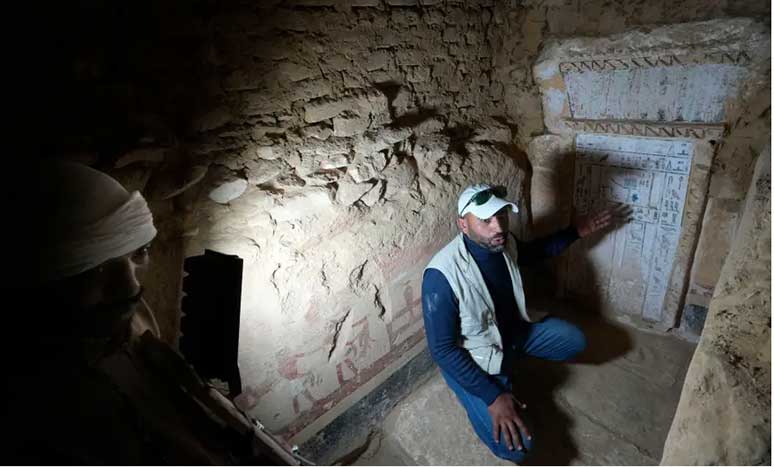A 4,300-year-old mummy has been unearthed close to Cairo in Egypt. The mummy was named “Hekashepes” and archeologists also unearthed amulets, pottery, stone vessels, tools, and statutes of deities alongside it.

The archeology team that found Hekashepes was led by Zahi Hawass, a former minister of antiquities in Egypt. Hawass said his team was trying to discover the tombs of 5th and 6th dynasty pharaohs that dated back to the 25th century BC when Hekashepes was unearthed at the bottom of a 49-foot shaft near the Step Pyramid in Saqqara, near Cairo.
Hawass said Hakashepes may likely be the oldest mummy ever discovered in Egypt. He said his tomb was extraordinary and that his sarcophagus was sealed with ancient mortar used by prehistoric Egyptians when burying the dead. He explained that he discovered the embalmed mummy after he put his head into the sarcophagus to see what was inside, and he saw a mummy “completely covered in layers of gold.”
Having been digging at the excavation site at Gisr al-Mudir for nearly a year, the archeologists also found the tomb of Khnum-djed-ef, a priest and official supervisor under Pharaoh Unas who lived in the mid-24th century BC. They equally found the tomb of Meri, who was the “keeper of the secrets” in the Egyptian royal family.
They also discovered the tomb of King Pepi 1 who ruled in the 24th and 23rd centuries BC; and then that of Messi who was a priest. And in the tomb of an individual known as Fetek, archeologists found the mummy inside a stone coffin laid beside a table of offerings and stone statutes representing deities. “Additionally, the expedition yielded many amulets, stone vessels, tools for daily life, and statues of deities, along with pottery,” Hawass said.
